By Carolina Lees
Until recently, I was a food farmer, plain and simple: if I couldn’t eat it, I didn’t care about it. But last spring I was looking for ways to increase sales to my existing customers. I figured that someone who already gets their week’s vegetables from me might spend extra to get a bouquet of flowers as well, so I could sell more with the same marketing energy.
With that admittedly materialistic motivation I planted a couple of short beds of flowers. And from my first bouquet, I was hooked.
Over the last year I’ve spent a lot of my free time learning about cut flowers. Many resources either start with the basics of selecting your site and starting seeds or are aimed at established flower growers looking to enhance and fine tune their operations.
This is the first in a series of articles aimed at growers who have a site and sales outlets and infrastructure, but who are novices with flower crops. Part 1 will talk about some basics of why to grow flowers and which flowers to grow. Part 2 will hone in on production techniques, particularly harvest and post harvest handling (I’ve found this to be one of the biggest differences from vegetables). Part 3 will focus on marketing and incorporating cut flowers into your farm business.
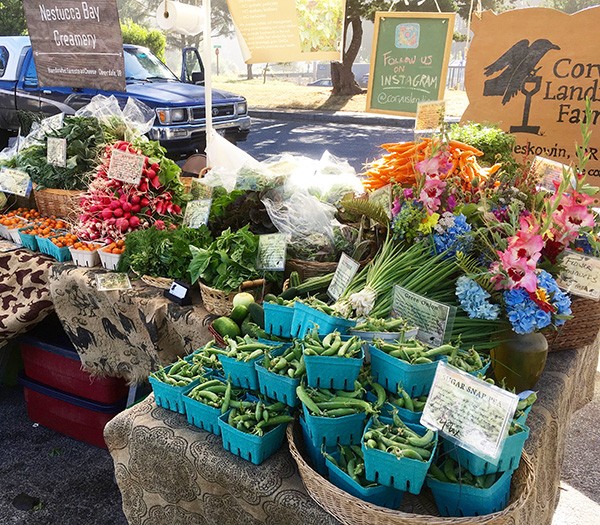
Flowers are a great visual addition to any market stand, and draw customers in. All images courtesy of the author.
Why add cut flowers?
The first thing that got me was the new relationship I suddenly had with plants I’d known for years. Herbs that went to flower had a new purpose as fragrant bouquet fillers. Plants that I walk by every day were suddenly great sources of greenery. I started to minutely notice the form of each plant, its shape and color. I found myself inspired by all the creative possibilities, as well as the money that was suddenly growing on the trees I’d been living next to for ten years!
Especially coming from the world of vegetables, flowers have a pretty enticing profit potential. They can be grown intensively and have versatile marketing opportunities. They attract customers and bring smiles to people’s faces, and the price point on flowers is substantially higher than that of vegetables. And they provide benefits for your farm as insectary plantings, encouraging pollinators and biodiversity.
Of course, with that price point comes increased costs. Flowers are particularly delicate, and shrinkage (loss en route to sales) is an important factor. Timing is everything, especially in harvest, and certain flowers (especially in hotter climates) have demanding harvest schedules. Plant and seed costs can be overall higher than for vegetables, depending on the kinds of flowers you grow and how you plan to market them. Transporting flowers around your farm and to their final destination is a challenge, as they just don’t stack neatly in boxes.

Flowers ready to arrange. Yes, I did use smartweed flowers in arrangements this year! Also note the cilantro and dill.
But there is growing demand for locally grown flowers as awareness about their benefits and the reality of the global flower industry spreads. Like local vegetables, local flowers often arrive looking better, and they last longer in the vase. Many flowers don’t survive well in shipping, so farmers can find a niche growing shorter lived or more delicate flowers that florists have trouble sourcing from afar. (Examples include dahlias, sweetpeas, and zinnias.)
Industrial flower farming involves extensive spraying of an array of chemicals to keep flowers pristine from field to vase. Several studies over the last 40 years have demonstrated elevated cancer risk and exposure to toxins among florists and workers on flower farms. The public is growing more aware of these risks and seeking out less toxic flowers to enjoy in their homes. Mainstream sources like Weddingwire and Brides.com list sustainable floristry and locally sourced flowers as top floral trends.
There seems to be an uptick in the number of new flower growers, farmer florists, and flower farming networks and cooperatives. Responding to the demand, several breeders and seed companies are increasing their selections of cut flowers and cut flower supplies, making it easier than ever to get into the business.
But why buy flowers at all? At the heart of it, flowers make people happy. Food feeds the body, and flowers feed the soul. The presence of flowers has demonstrated therapeutic benefits: one study showed that hospital patients who had flowers in their rooms had lower blood pressure, reduced anxiety, and needed less pain medication than those without flowers. Another study showed that receiving flowers has both immediate and long-term effects on mood, with participants reporting reduced anxiety and depression after receiving flowers. Flowers also cultivate interpersonal connections and reduce social isolation, particularly for seniors.
Personally, I see flowers as a way to connect people to plants and nature. Living on a farm, it’s easy to forget that not everybody is immersed in natural environments. Plants are underappreciated and undervalued in our culture, and flowers are an accessible starting point for people to connect with them. I think the world would be a better place if more people valued plants, and flowers are a good way to invite people in to their potential.
Adding cut flowers to your farm
Choosing which flowers to grow will depend partially on where and how you intend to market them. If you already operate a CSA or farmers market booth, you may find it easiest to sell mixed bouquets, growers bunches, or single stems. Mixed bouquets are also popular choices for sales to grocery stores. General wisdom is that the best sellers at farmers market are bright, colorful blooms.
Florists and wholesalers are often looking for different types of flowers than will move at the farmers market. Working with a florist is much like working with a chef: growers can specialize their offerings and sell larger quantities to an appreciative customer.
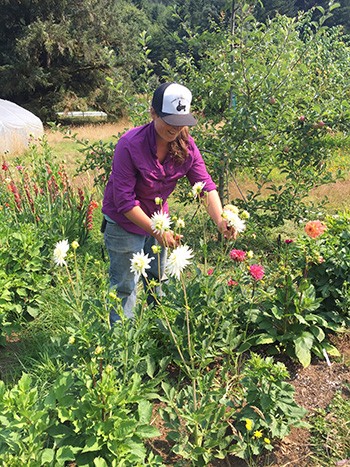
A small space can produce a lot of flowers.
If your flowers will ultimately be used for weddings, events, or flower deliveries, you may need some fancier flowers and different color palates. Blushes, whites and muted color tones are more common for wedding work, whether you sell to florists, DIY weddings (people buying in bulk for their wedding and arranging themselves) or take on design work yourself. Demand can fluctuate throughout the season, depending on the most popular times for weddings in your region.
I will be diving into marketing more deeply in the 3rd installment of this series, but it’s important to be thinking about the final destination of your flowers in deciding what to grow.
What to grow
It’s not difficult to work a few cut flowers into a diverse vegetable farm operation, and you can dive as deep as you want into the flower world. Many vegetable farmers start with easy to grow annual flowers that can be started from seed and fit easily into a vegetable farm. A common challenge with growing flowers is that many require cooler temperatures to bloom well. Some of the most popular choices for vegetable growers are flowers that are more heat tolerant.
Sunflowers and zinnias are probably the two most popular, and their bright colors are a hit with farmers market customers. Other flowers to start with might be:
- Cosmos
- Bachelor’s buttons (centaurea)
- Amaranth
- Celosia
- Calendula
- Snapdragons
- Ornamental grasses
- Statice
- Strawflower
- Globe Amaranth (Gomphrena)
- Basil
Most of these are heat tolerant or downright heat lovers. I won’t even try to grow celosia on my farm because my maritime climate doesn’t have the warmth to support it!
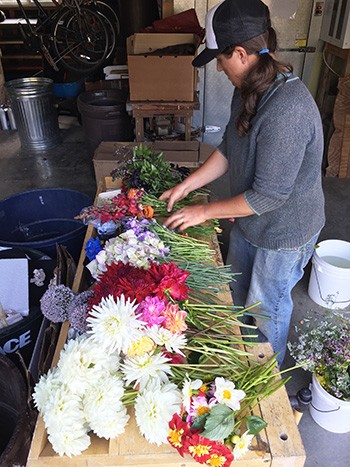
When making mixed bouquets, flowers are laid out by type, then compiled in your hand into a market bouquet. Regarding small spaces, it’s better to have a little more space than the author has here!
Many of these flowers have a more rustic garden look. Fancier flowers can be more particular to grow or require more investment up front for planting stock, and many are perennial. However, some of these are extremely productive, last for years, or bloom in a season when not a lot else is happening on the farm. Some examples are:
- Ranunculus
- Anemone
- Veronica
- Peony
- Hydrangea
- Tuberose
- Lisianthus
Flowers that may be a challenge to market profitably are the ones most prevalent in the global flower trade. The exception would be if you chose to grow specialty varieties that are hard to find or unique. The list I’ve seen most often includes carnations, roses, garden mums, and gerbera daisies.
Flowers can be loosely broken down into focus flowers (like lilies, dahlias, or sunflowers), filler flowers (like statice, cosmos, or strawflower), and greenery (like basil, raspberry leaves, or dusty miller). It’s nice to grow flowers with different shapes and textures. Some flowers are disks (cosmos, strawflower), some are spikes (snapdragons, plume celosias), some are airy (ornamental grasses, nigella). A general rule of thumb is to grow half focus flowers and half greenery and filler, especially if you are marketing mixed bouquets.
Crop planning
Like vegetables, different flowers have different harvest windows. Some are “one and done” (think cauliflower): stock, single stem sunflowers, and Bombay celosia are examples. These need to be planted regularly to keep a steady supply. The advantage is they are typically a little quicker to produce, allow for quicker bed turnover, and multiple rotations gives more room for error. But they may be less profitable, as they aren’t necessarily higher value flowers, and may require similar inputs for lower yields.
Medium length producers give a few cuts before petering out, so need to be planted in longer rotations (think bush beans or peas). Examples are amaranth, snapdragons, and Queen Anne’s Lace (ammi). I’m aiming for 3 - 4 weeks between sowings on these to keep a consistent supply and allow me to move on to fresh plantings when the early ones are spent.
“Cut and come again” flowers are some of the more popular choices for vegetable growers. These have long, extended harvest windows with regular harvests of blooms (think tomatoes or zucchini). These are typically the highest yielding of the flower crops. They require regular harvesting to maintain productivity and to keep harvest efficient, and their long residency in your beds may require extra labor to keep them weed free. Though you may harvest a patch all season, many growers choose to plant 2 or 3 successions to keep blooms fresh, supply consistent, and harvest easier. Examples are zinnias, cosmos, and basil.
An important thing to note is that there are no flowers that can come to harvest as quickly as the quickest vegetable crops, like radishes or salad. 60 days seems to be a minimum on most flower crops, and many are double that. On the flip side, some flowers can be fall planted in most climates for early harvests. Bulbs generally fall into this category, along with many herbaceous and woody perennials. Sweet peas and larkspur are annuals that are often planted in the fall in a high tunnel and harvested early the following spring.
I started by picking out about ten flowers that I thought would do well on the farm and planting just a few feet of each a few times throughout the season. I didn’t plant much greenery, instead cutting from already established plants around my forest and farm. I designated a small area near my house for flowers, which kept them all together and made them easy to monitor throughout the season. I took good notes about sowing, planting, and harvest dates for use in this year’s crop plan. This year, I’m devoting six full beds in the field to them, all grouped in the same part of the field for ease of harvest.
It’s remarkable how many blooms you can get from just a few feet of something. If you are growing mixed bouquets, you don’t necessarily need a whole bed of one kind of flower. And you can almost always use even a couple of blooms if you want to try a new variety.
Some growers may opt for putting small plantings at the ends of other rows, say in a cauliflower or squash bed. This can work as long as your flowers and their vegetable neighbors have a similar maturity window. Harvest is considerably easier, though, if all your flowers are in the same general area. As flowers can’t be stacked and need to be put in water as soon as possible, they are a bit awkward to transport around the farm. Lots of disparate patches all over the place may lead to the flowers getting forgotten and ignored. This isn’t so bad, though, since they can benefit your crops by attracting beneficial insects or acting as trap crops, or just making you smile when you walk past them.
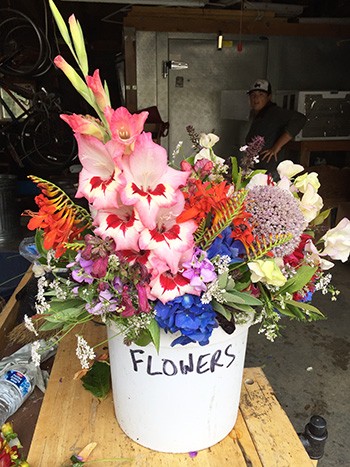
Mixed bouquets in buckets and ready to sell. This year the author will be wrapping her bouquets for better protection and a more professional appearance.
Similarities and differences
As a vegetable farmer, you already many of the skills and infrastructure you need to grow flowers, particularly if you choose to work with annuals. However, there are significant differences to take into account if you are considering adding flowers to your crop plan. I will go into more detail on production in the second part of this series, but here’s some food for thought.
Many seed companies supply both vegetable and cut flower seed. When purchasing seed, it’s important to look for varieties appropriate for cutting, which usually means they have long, strong stems and hold up in a vase. Flower seed, especially for the more popular types, is generally differentiated by color. You may choose to grow color mixes and work with what you get, but as you develop your style or hone in on particular markets, you’ll want the colors separated, which means buying more seed at smaller quantities and therefore higher prices.
Starting seed and growing out transplants is similar to vegetables. Some flower crops are slow to get started and require more time in flats in the greenhouse, especially early in the season. Some seed has specific germination requirements (needs light, no light, stratification, etc). Check the seed packet or look up individual varieties to ensure good germination. When planting, many flowers benefit from dense, close spacing, making them productive in small spaces.
Some flowers require support to keep the stems upright and straight, which you may or may not want to get into. Many flower growers use Hortonova-style netting stretched across the bed as the flowers grow. Other flowers can be corralled in with t-posts or bamboo stakes and twine.
Harvest and post-harvest handling are in my opinion the biggest difference between flowers and vegetables. Each flower has a different ideal harvest stage. Some are best harvested in bud, before the flower has even opened. Some are best just as they are starting to open, and some won’t open at all after harvesting. Harvesting at the correct stage ensures the longest vase life and best-looking bouquet for your customer.
Flowers need to be hydrated as soon as possible after cutting. Many growers harvest bunches into clean buckets of water in the field, then bring them back to rest in the cooler. Some flowers hydrate more easily than others, and some benefit from scalding the tip of the stem in boiling water or with a torch. Many growers use flower food or hydration solutions in the water to help cut flowers hydrate and to keep them fresher longer. Fortunately, most flowers keep well in the cooler with vegetables, as long as they have clean containers and water.
Flowers may or may not be for you, but they are worthy of consideration as part of a diverse farm operation. If you’re not sure, just start small and see what happens!
Resources
I mentioned that I’ve been diving deep into the world of flowers. Here’s some of the resources I’ve found most helpful:
Association of Specialty Cut Flower Growers: Provides resources, information, and events for flower growers.
Slow Flowers: Founded by writer Debra Prinzing, Slow Flowers promotes American grown flowers. Podcast, national directory, and events.
Johnny’s Selected Seeds: Good source for cut flower seeds and resources in their online Growers library.
Carolina Lees started Corvus Landing Farm in 2010 at the Oregon coast. She and her crew farm two acres of vegetables, providing for the small communities surrounding the farm through farmers markets and a 60-member CSA.

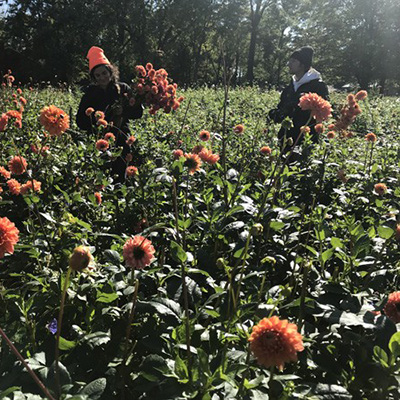
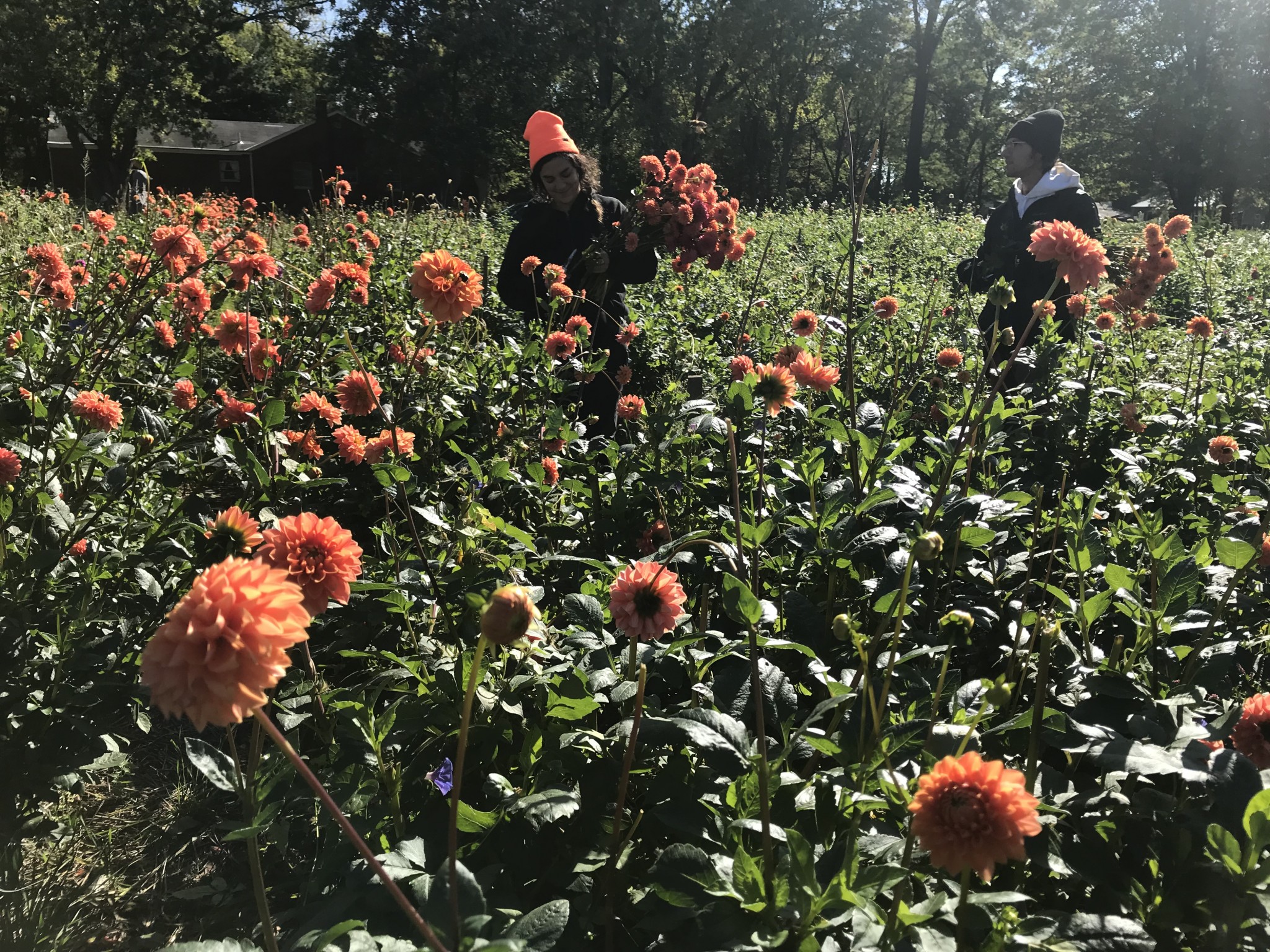 Dahlias were our number one crop this year, even beating out lisianthus and ranunculus by a landslide. We have tried many different methods of growing them, and these are the solutions we’ve come up with. I’m sure there are still better ways, and if you know of any, definitely send them our way! This year we planted 7,000 dahlias and plan to plant even more next year as we increase our growing space. Let’s just start at the beginning with planting and work our way through the whole process.
Dahlias were our number one crop this year, even beating out lisianthus and ranunculus by a landslide. We have tried many different methods of growing them, and these are the solutions we’ve come up with. I’m sure there are still better ways, and if you know of any, definitely send them our way! This year we planted 7,000 dahlias and plan to plant even more next year as we increase our growing space. Let’s just start at the beginning with planting and work our way through the whole process.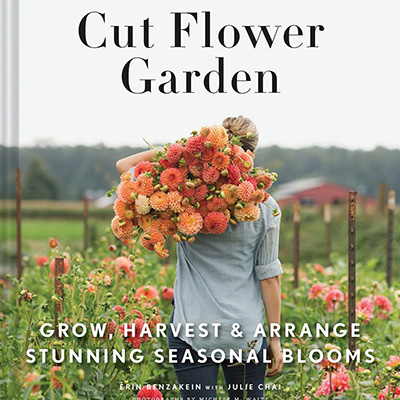
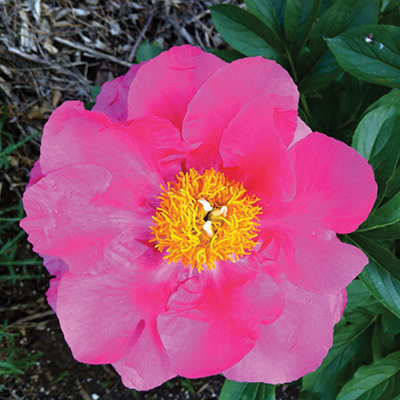
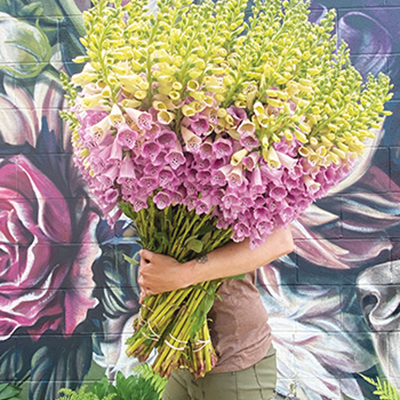

 If you’ve been a subscriber to Growing For Market (or even if you haven’t), you’re probably familiar with the many advantages of no-till agriculture. No-till methods can reduce a farm’s carbon footprint, promote complex soil biology, and preserve and build organic matter.
If you’ve been a subscriber to Growing For Market (or even if you haven’t), you’re probably familiar with the many advantages of no-till agriculture. No-till methods can reduce a farm’s carbon footprint, promote complex soil biology, and preserve and build organic matter.
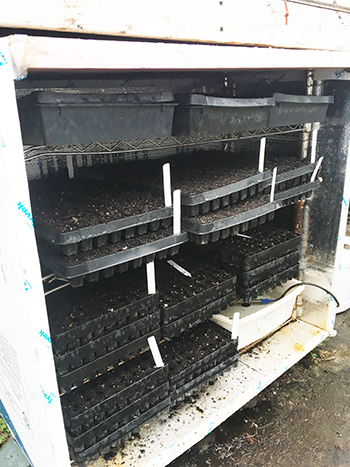 Until two years ago I was germinating all seedlings in greenhouses using almost exclusively bottom heat from electric heat mats. At my current farm we only had space for about 8-10 trays on our two mats and we definitely noticed differences in the germination (and presumably the heat the mats were providing) on the edges of our trays.
Until two years ago I was germinating all seedlings in greenhouses using almost exclusively bottom heat from electric heat mats. At my current farm we only had space for about 8-10 trays on our two mats and we definitely noticed differences in the germination (and presumably the heat the mats were providing) on the edges of our trays.
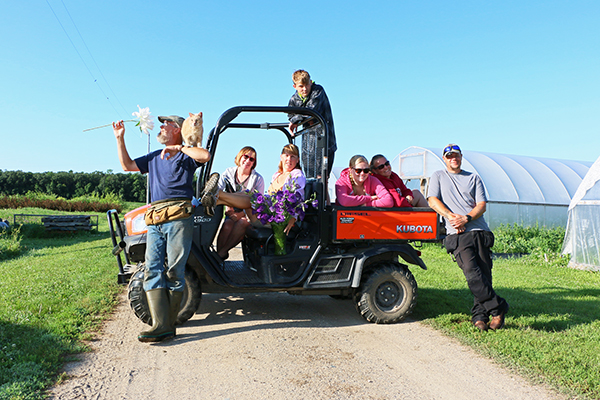 Here's a system to track all those details
Here's a system to track all those details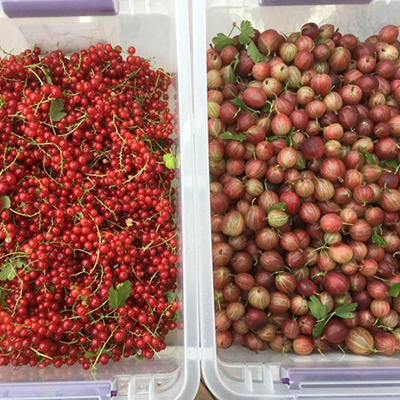
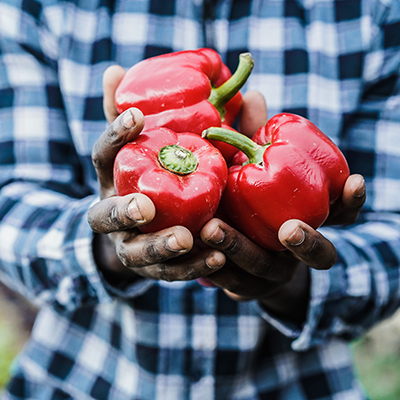

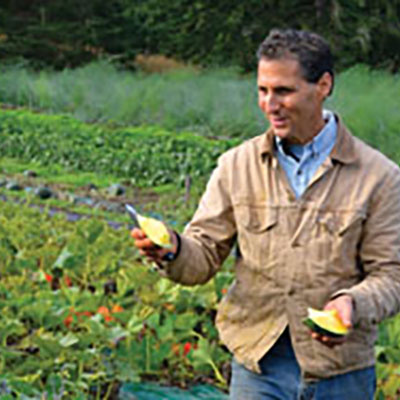
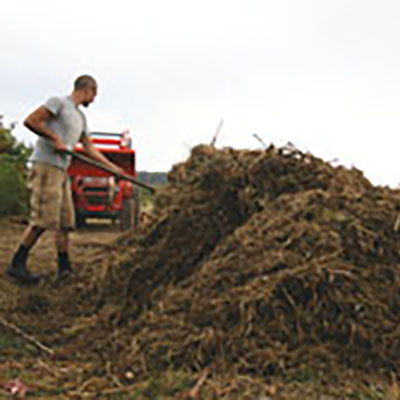
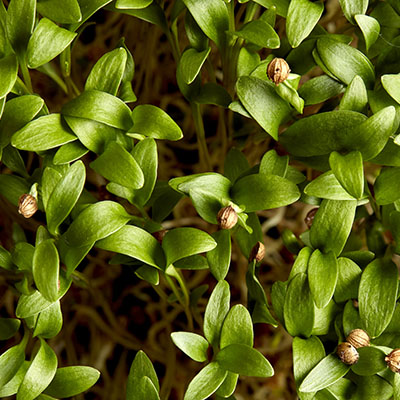


 Over the last 10 years, there has been a lot of information coming out pertaining to growing veggies in soil in greenhouses. We wanted to share some of what we’ve learned over the past 13 years growing flowers under plastic and touch on some new approaches we’ve implemented since we last wrote about greenhouse growing (see our GFM articles in November 2014, November 2015, and April 2018).
Over the last 10 years, there has been a lot of information coming out pertaining to growing veggies in soil in greenhouses. We wanted to share some of what we’ve learned over the past 13 years growing flowers under plastic and touch on some new approaches we’ve implemented since we last wrote about greenhouse growing (see our GFM articles in November 2014, November 2015, and April 2018).